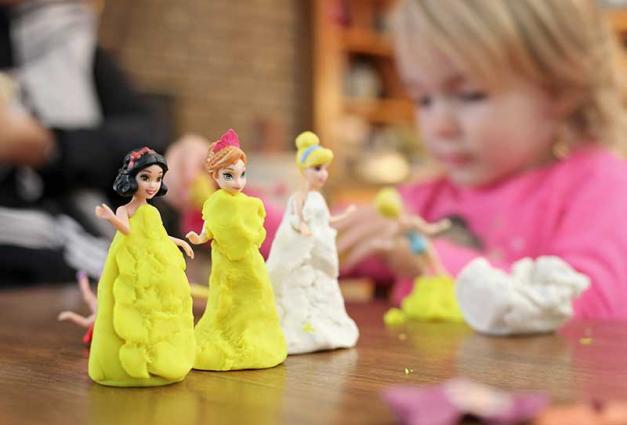Today, during circle time in preschool, the teacher is reading a new book called The Three Robbers. The teacher begins reading the book: "Once upon a time there were three robbers, with big black coats and high black hats.” When the teacher shows the picture to the children, Jeanne says to the classroom: "They are scary! But actually, they are nice!" The other children wonder how Jeanne knows this!
This example illustrates the fact that classroom settings bring to light many differences among children. These differences might pertain to academic achievement, to the speed and ease with which children perform various tasks, to how they speak, or to other behaviors and characteristics. In a recent project, my colleague, Andrei Cimpian, and I examined the question of how children explain the differences they observe in the classroom and what the consequences of their explanations are.
Research shows that children’s explanations for differences among students tend to focus on the personal characteristics of the children. That is, children explain why other students perform differently in terms of inherent or intrinsic factors—such as differences in intelligence and motivation—rather than in terms of extrinsic or situational explanations such as students’ social background or family situation. This inherence bias in children’s explanations is probably due to a combination of things. For example, compared to extrinsic properties such as family background, inherent properties are more obvious and observable—they come to mind more easily, and they are simpler to think about.
The inherence bias is also reinforced by students’ cultural contexts. For example, in Europe and North America, we usually think of people as independent, autonomous individuals who are separate from others. As a result, people in Europe and North America may perceive people’s behaviors and outcomes to be the result of their own characteristics. But cultural contexts in which people are viewed as more interdependent and connected, people may be more attuned to the effects of outside forces—both the situation and other people—on how people behave. As a result, people in such cultures may favor external, situational explanations for the differences they see among people.
The inherence bias is also encouraged by the characteristics of school classrooms. In most societies, children in a particular classroom are all close in age, they have the same teacher, and they are usually given the same lessons and perform the same tasks. This apparent homogeneity of the classroom environment makes achievement differences among children stand out while drawing attention away from the external, situational influences acting on the children, such as differences in the time and resources children’s families can devote to helping them. Teachers’ behavior and language in the classroom can also inadvertently reinforce the inherence bias in children’s explanations for differences among their peers, for example by labeling high-achieving children as a “genius” or “math whiz.”
Evidence suggests that children’s tendency to explain differences among children in school in terms of their inherent, personal characteristics undermines motivation and achievement. For one thing, this inherence bias makes the experience of being outperformed by one’s peers particularly threatening to children’s confidence and self-image. Explaining differences in achievement as resulting from differences in inherent factors such as ability jeopardizes students’ self-images, which in turn undermines their motivation and achievement. Because children from marginalized backgrounds, such as working-class or ethnic minority children, are more likely to experience difficulty and be outperformed by their peers (due, in part, to having less “cultural capital” in school contexts), the inherence bias amplifies group inequalities in the classroom. Moreover, beyond amplifying inequalities, inherent explanations tend to make differences among children appear legitimate and fair, lowering the motivation to reduce them.
The early-emerging inherence bias in explanation may also lead some children to develop fixed mindsets about ability and other personal characteristics such as motivation, viewing these characteristics as stable and unchangeable. Fixed mindsets about ability have negative consequences for children who experience difficulty in school. Students who believe that intelligence and ability are fixed and unchangeable tend to feel helpless and give up when they do poorly, in part because they interpret mistakes as a sign that they are not smart enough to succeed.
We offer some recommendations that might help parents, teachers, and educational policy makers design adaptive educational contexts that counteract the negative effects of the inherence bias in children’s explanations. First, parents and educators can try to reduce the inherence bias by highlighting for children some of the contextual factors that cause differences among students. Research has documented that teaching a “contextual” theory of differences”—that differences among people are often due to the situations they live in -- has positive consequences for achievement.
In addition, it is important for parents and teachers to explicitly refute the implication that such differences are stable and unchangeable. For example, teaching students that difficulty is a necessary—but temporary—aspect of the learning process or that academic ability is changeable has positive consequences. Finally, simple adjustments to the classroom context may be shift attention away from differences in achievement, for example by emphasizing learning and improving over performing better than others, or by stressing cooperation over competition.
In brief, children are exposed to myriad differences among students in their classrooms, and they usually make sense of these differences as being consequences of inherent rather extrinsic factors. It is imperative to inform teachers, parents, and policy makers of the negative consequences of these explanations on motivation and achievement, fixed mindset, and the amplification and legitimation of educational inequities, while helping them to implement possible adjustments to counter these negative consequences.
For Further Reading
Goudeau, S., & Cimpian, A. (in press). How Do Young Children Explain Differences in the Classroom? Implications for Achievement, Motivation, and Educational Equity. Perspectives on Psychological Science. https://www.researchgate.net/publication/341910040_How_Do_Young_Children_Explain_Differences_in_the_Classroom_Implications_for_Achievement_Motivation_and_Educational_Equity
Sébastien Goudeau is an Assistant Professor in Social Psychology at the University of Paris.




